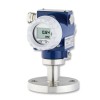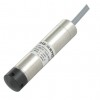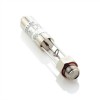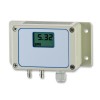Incompatibility between a sensor and the media being measured is one of the major causes of premature failure.
Although most sensors are compatible with the majority of applications measuring common fluids and gases such as air and water, it becomes a great deal more selective for applications involving petrochemicals, corrosive chemicals, specialised gases and waste fluids.
Knowing the media type helps the supplier to choose a sensor with compatible materials.
This is a list of web resources for checking the compatibility of materials with different liquids and gases.
Interactive Tools
- Gas Encyclopedia – Air Liquide’s detailed guide to over one hundred different molecular gases.
- Chemical Compatibility – Match a material with compatible chemicals or a chemical with compatible materials using this guide.
- O-Ring Material Compatibility – Check the compatibility of O ring materials with different chemicals using this tool.
Charts and Tables
- Elastomer material types A-Z properties
- O-Ring Fluid Compatbility – Cross-check the chemical compatibility of O-Ring materials based on percentage of swell using this table.
- EPDM O-Rings – Physical properties and chemical resistance of Ethylene Propylene Diene Monomer O-Rings.
- Spilltech Polyurethane (PUR) chemical compatibility guide
- Plastics, elastomers & metals chemical compatibility chart
- 96% ceramic, FKM, SS303 & 316 chemical resistance chart
- Permeation coefficients for gases passing through O-ring materials
Articles
- Polyvinyl Chloride – Overview to the properties and applications of PVC.
- Fluorinated Ethylene Propylene – Dupont’s product guide to Teflon® FEP.
- NBR – Summary of of the properties and limitations of Buna-N (Nitrile) O-Rings.
- O-Ring Tips – A guide to the type of O-rings to use for a variety of applications.
- Kalrez® perfluoroelastomer (FFKM) chemical resistance.
Material Compatibility Q&A
Submersing pressure sensors in chlorinated water
What are the optimal materials that should be specified for installing a submersible pressure sensor in chlorinated swimming pool water?
The following materials provide excellent chemical resistance to Chlorine and are used in the construction of submersible pressure sensors:
- Body Material: PVC
- Seals: Viton, FFKM or Chemraz
- Sensing Diaphragm: Alumina Ceramic (Al2O3)
- Electrical Cable Jacket: FEP or PVC
Salt water compatible materials
For the pressure sensor parts in contact with salt water, what materials do we need to make sure are used in the design?
There a number of materials which are compatible with salt water / seawater and the selection of each will depend on other constraints such as pressure rating, sensor technology, size, temperature rating and bonding methods to mention a few.
Some of the materials often used are as follows:
Diaphragms
- Ceramic Al2O3
- Titanium
- Hastelloy C276
Body / Pressure Ports
- PVC
- PVDF
- Super Duplex stainless steel
- Hastelloy C276
- Titanium
- CuNiFe
- Marine Bronze CA104
Seals
- Viton / FKM Fluoroelastomers
- Buna N / NBR / Nitrile
- EPDM
Cable Jacket
- PUR Polyurethane
- PVC
- FEP
- Teflon
Cooling system storage tank corrosion
Our site has a closed loop thermal energy storage tank that is always in circulation and utilizes water treatment for corrosion protection. It is used for redundant bldg cooling. The water temp is 65 degrees. We have had multiple failures on our submersible pressure sensors. They all have stainless steel 316L housings, and are corroded. The last set that were replaced are pitted very badly and appear to have suffered from electrolysis. The tank has no cathodic protection, because the manufacturer says they don’t need it due to the epoxy coating on the interior walls. The tank also has no lightning protection.
We would suggest trying a sensor that is more chemically inert/resistant that has a Ceramic sensing diaphragm and a PVC/PVDC housing such as the LMK806, LMK807 or LMK809.
Related Help Guides
- Measuring the volume of liquid in a horizontal cylinder tank
- Considerations for monitoring Landfill Water Level
Related Technical Terms
- Al2O3
- Bonded Seal
- Dry Cell
- Dry/Dry
- EPDM – Ethylene Propylene Diene Monomer
- FEP – Fluorinated Ethylene Propylene
- FFKM – Perfluoroelastomer
- FKM – Fluoroelastomer
- Food Grade
- IP Ratings
- PUR, PU – Polyurethane
- PVC – Polyvinyl Chloride
- Stainless Steel Pressure Sensors
- Wet/Dry
- Wet/Wet
- Wetted Parts





